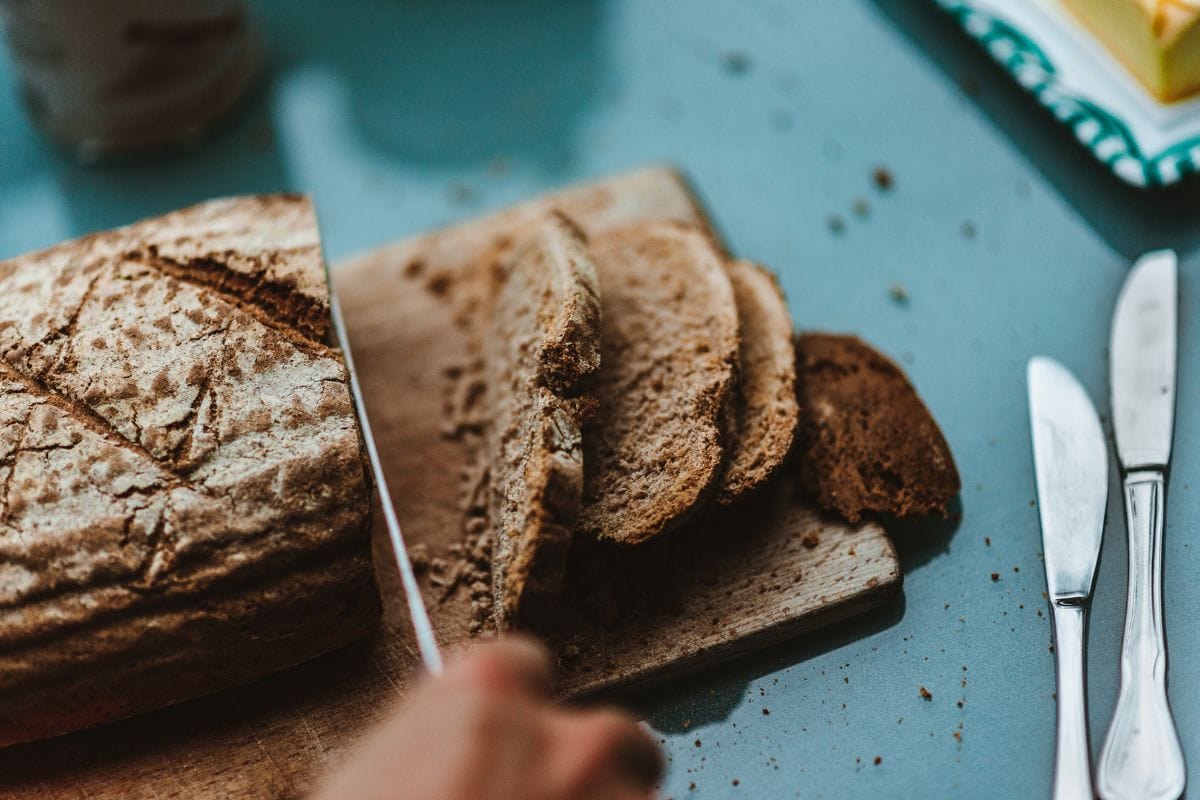Sourdough bread has become very popular over the last decade. The reason behind its popularity is because of its unique taste and texture.
Many people wonder whether sourdough contains gluten. Is it safe to be eating sourdough bread? Is sourdough bread gluten-free?
Sourdough is a type of fermented dough that uses natural yeast instead of commercial baker’s yeast. This means that sourdough bread does contain gluten.
Is Sourdough Gluten Free Or Not?
The protein in wheat sourdough has shown that it has fewer gluten particles, but the amount can vary.
So while it might contain less gluten than other types, it could still pose health risks.
If someone has celiac disease or gluten sensitivity, it’s important to avoid all forms of gluten. And wheat flour, which is used in sourdough, has gluten.
Those with gluten sensitivity or a wheat allergy should also avoid wheat and wheat-containing foods, including bread, pasta, crackers, cookies, cakes, pies, and pizza crust.
Is Sourdough Easier To Digest?

A sourdough starter is nothing short of magical. This simple mixture of water, flour, and live yeasts and bacteria turns into a thick, bubbly batter that looks like something out of a science experiment.
But what exactly happens during the fermentation process? And how does it affect digestion?
There are three types of yeast commonly used in baking: baker’s yeast, brewer’s yeast, and wild yeast. Each type plays a different role in the fermentation process.
Baker’s yeast is most often used to leaven baked goods such as bread and pizza dough.
Brewer’s yeast is used to produce beer and wine. And wild yeast is typically used to make sourdough starters.
What’s The Difference?
Wild yeast is naturally present in many fruits, vegetables, and grains, including oats, rye, and barley.
These organisms feed off sugars and starches, producing carbon dioxide gas as a byproduct.
They also contribute to the flavor of the food. However, you should be cautious against eating too much wild yeast because it contains high amounts of dietary fiber, which slows digestion.
While baker’s yeast is generally considered safe, the yeast cells contain enzymes that could cause digestive distress.
This could be an issue if you have non-celiac gluten sensitivity or gluten intolerance that is associated with celiac disease. Homemade sourdough bread may be the way to go!
What Are The Benefits Of Sourdough?
Sourdough bread could help those with celiac disease avoid gluten
The internet is full of reports of people claiming that they no longer experience gastrointestinal problems after avoiding wheat, rye, barley, and oats.
These folks say that they eat sourdough bread without issue. But is it possible that sourdough bread might actually make you feel better?
Patients with celiac disease — a genetic disorder that causes damage to the small intestine when someone eats foods containing gluten — experience fewer gastrointestinal complaints when they eat sourdough bread compared with regular white bread.
However, while sourdough bread does contain FODMAPs — carbohydrates that can cause gastrointestinal distress in people with irritable bowel syndrome — most commercial sourdough bread does not contain enough FODMAPs to cause any significant discomfort.
How To Get Gluten-Free Sourdough Bread?

There are many brands of ready-made, pre-packaged gluten-free sourdough bread on the market.
These products typically include some form of fermented wheat flour, such as sprouted grain flour, arrowroot powder, agave nectar, honey, molasses, and/or sugar.
Some companies use a combination of ingredients, while others stick to one particular ingredient.
Some manufacturers claim their product tastes better because it uses a different type of yeast than traditional gluten-containing bread dough.
Others say that the fermentation process improves the taste and texture of the final loaf.
Still, others contend that the high levels of natural enzymes found in sourdough bread make it easier to digest.
While there are no scientific studies proving that sourdough bread is healthier than other types of gluten-free bread, most nutritionists agree that it does contain fewer carbohydrates and sugars than conventional gluten-based bread.
Sourdough bread tends to have a lower glycemic index than standard gluten-free bread.
This means that it takes longer to raise blood glucose levels, making it less likely to cause a spike in insulin.
Baking It From Home
If you want that fresh-baked flavor and texture, consider baking a homemade loaf of gluten-free sourdough bread.
But don’t just buy a packaged loaf of gluten-free bread. Instead, start with a good quality gluten-free starter, as a result, your finished product will have a lighter crumb and a better flavor.
To begin, mix together about 1/4 cup of the starter with about 1 / 4 cup of gluten-free flour. Then add 1/4 cup of warm water.
Mix well, cover the bowl with plastic wrap, and set aside at room temperature for 24 hours.
After 24 hours, stir the mixture again and place it into another container. Continue doing this every day for 7 days.
Once the starter is ready, use it to bake your own gluten-free bread.
Here are the steps to follow for your gluten-free diet with sourdough wheat bread.
1. Preheat the oven to 450 degrees F. Line a baking sheet with parchment paper.
2. Remove the dough from the container and knead it gently on a lightly floured surface. Place the ball of dough onto the prepared pan. Using a rolling pin, flatten the dough into a rectangular shape.
3. Use a pizza cutter to slice the dough into four equal pieces.
4. Bake the crust for 12 minutes. Reduce heat to 350 degrees F and continue baking for 15 minutes longer.
Final Thoughts
Sourdough bread has been around since ancient times. The first written record of sourdough bread was discovered in China, dating back more than 2,000 years ago.
Today, sourdough bread is still popular throughout Europe, Asia, Africa, Australia, and North America.
You can make your own sourdough bread if you have been diagnosed with celiac disease, or are gluten intolerant.
It’s easy to find a variety of gluten-free sourdough bread on the market today.










